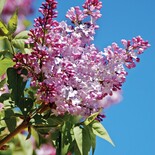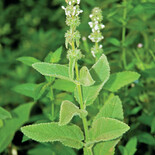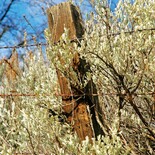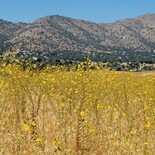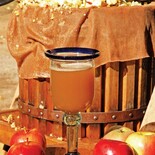The good scents of Tehachapi
Land of Four Seasons
September 16, 2023
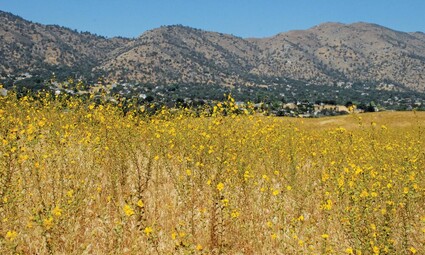
Jon Hammond.
Fragrant Tehachapi Tarweed flowers in Golden Hills pastureland, below Togowakahni (Black Mountain).
Humans tend to rely most heavily on our sense of vision to navigate and experience our surroundings, assisted by our hearing. But another powerful ability is our sense of smell, and this olfactory perception can connect to some of our strongest, most primal likes, dislikes and memories.
A scent that matches ones in our memory can transport us to a place and time in our mind instantly, or evoke an association that seems elemental to our being. The smell of a cut pumpkin can immediately summon thoughts of childhood jack-'o-lantern carving, the aroma of hot buttered popcorn practically says "movie theater" out loud, and the fragrance of coconut suntan lotion (or more prudently, sunblock) conjures up warm, lazy summer days at the beach.
The old saying states that "a picture is worth a thousand words," but a scent can be the password that immediately unlocks a wealth of stored recollections and sensations. . .
The aroma of a warm pan of brownies or cookies, just out of the oven, can recall a Grandma or other loved one who baked for you. A whiff of pipe tobacco can awaken a feeling of old ships, wooden paneling, and distant ports.
The natural world is also full of evocative scents, many of them produced by plants, and the Tehachapi Mountains are home to many of these wonderful fragrances. I have a few favorites. Well, dozens of them actually, so I'm probably stretching the word "favorite" to its most elastic, all-encompassing state.
One of these is the citrusy, faintly apple-like, Christmas tree aroma of White Fir (Abies concolor). These conifers are one of the most common trees found in the mountains south of Highline Road, and Tehachapi Mountain Park is home to thousands of them. Squeeze some of their short, rounded needles in a fist, open your hand and lift it near your face, and a delicious smell will emanate. That unforgettable scent of a real Christmas tree from holidays past will fill your senses.
Another favorite is Tehachapi Tarweed (Holocarpha heermannii), which is currently flowering in profusion throughout the valleys of the Tehachapis. These resinous plants, which are typically about two feet tall with little yellow sunflower-like blossoms, have an unmistakable aroma that to me smells like a combination of pine tar and shea butter. It is strong and pungent, and may not be to everyone's liking, but to me it is one of the quintessential fragrances of summer, and the smell takes me back many summers ago to an idyllic boyhood spent exploring the fields, hillsides and canyons of Tehachapi.
Of course I have to mention the rain scent of Creosote Bush (Larrea tridentata). The foliage of this hardy plant, which carpets the Mojave Desert floor east of us, has a clean smell like the first drops of a summer rain. That scent is called petrichor, and Creosote Bush possesses it all the time. When we have a rain storm come in from the east, accompanied by an easterly breeze, the fresh scent of Creosote Bush perfumes the air and wafts in through any open windows or screen doors.
Many fragrances are seasonal, and in Tehachapi these include the bouquet of abundant lilacs in the spring, or the delicious essence of mountain-grown apples being chopped and squeezed into apple cider, or sliced and made into apple pie or applesauce.
The visceral, instinctual nature of aromas is revealed by our reaction to them: when we bend to smell a flower, or a sweet tree-ripened fruit, at the first detection of a pleasant, cherished fragrance, we often close our eyes naturally as we inhale, focusing our attention on the pleasure of what our nose is smelling and not what our eyes are seeing. Cognitive scientists say this is a way of blocking out visual stimuli, and allowing your mind to process the scent with fewer distractions.
There are so many agreeable, satisfying fragrances found locally, including the bracing, woodsy smell of Great Basin Sagebrush (Artemesia tridentata) leaves, the piney, cedar-like smell of California Juniper foliage (Juniperus californica), and the faintly antiseptic, minty smell of White-stemmed Hedgenettle (Stachys albans), which grows in damp areas and serves as an antidote to Stinging Nettle (Urtica dioica).
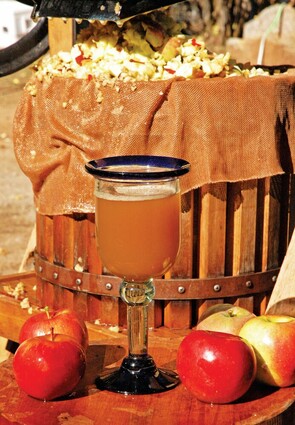
Jon Hammond.
Freshly-chopped Tehachapi apples are squeezed into cider, exuding that sweet, fruity smell of ripe apples.
Using your sense of smell to better experience your surroundings, and to help identify and savor local plants, will make your interactions with the natural world more evocative and memorable. You will be more at home in a place you can decipher with your eyes AND your nose. Other mammals do this, and so can we.
Keep enjoying the beauty of life in the Tehachapi Mountains.
Jon Hammond is a fourth generation Kern County resident who has photographed and written about the Tehachapi Mountains for 38 years. He lives on a farm his family started in 1921, and is a speaker of Nuwä, the Tehachapi Indian language. He can be reached at tehachapimtnlover@gmail.com.


